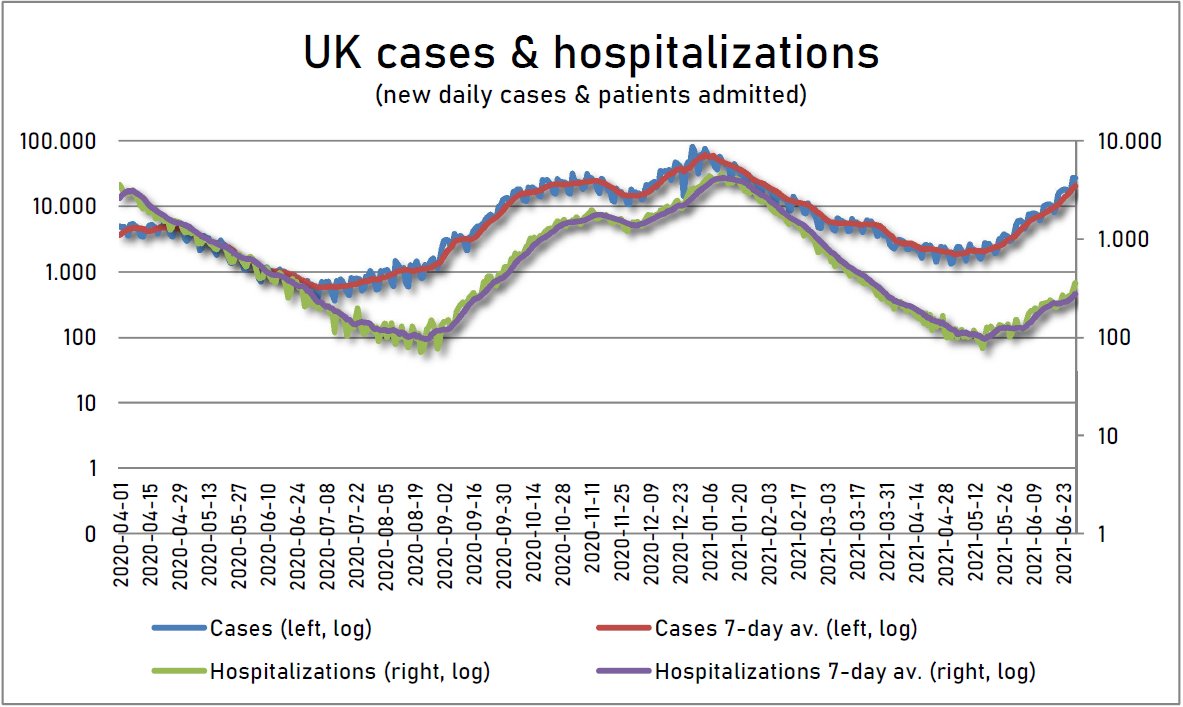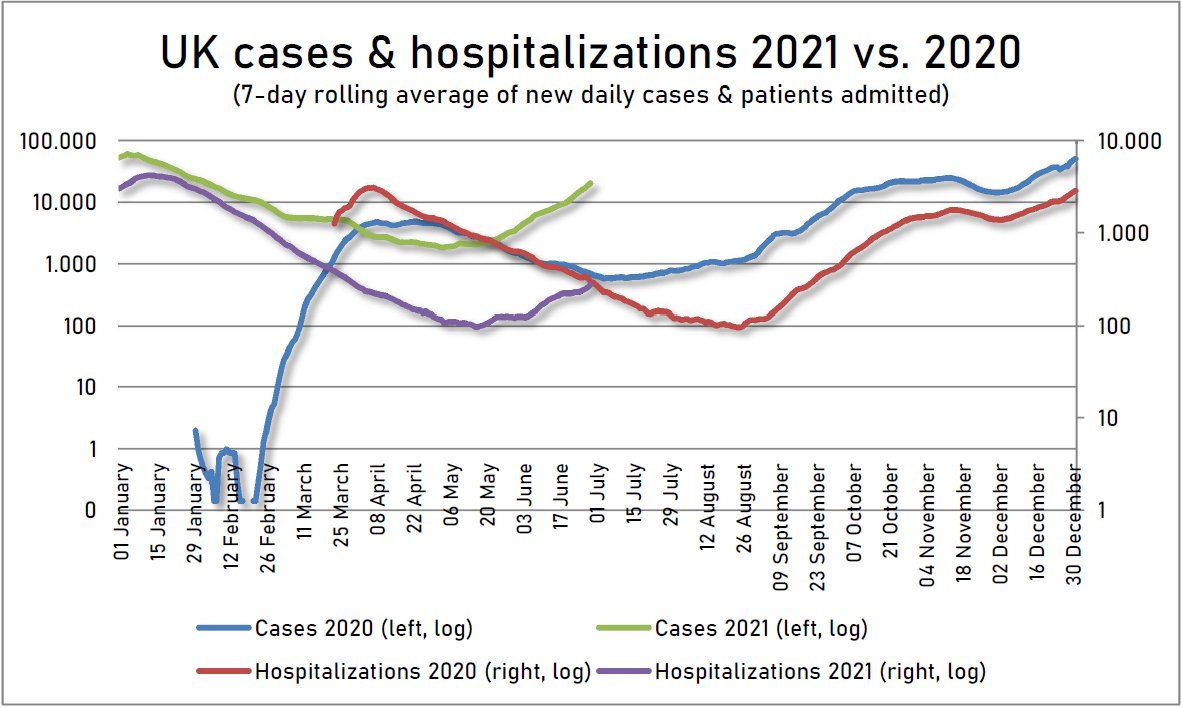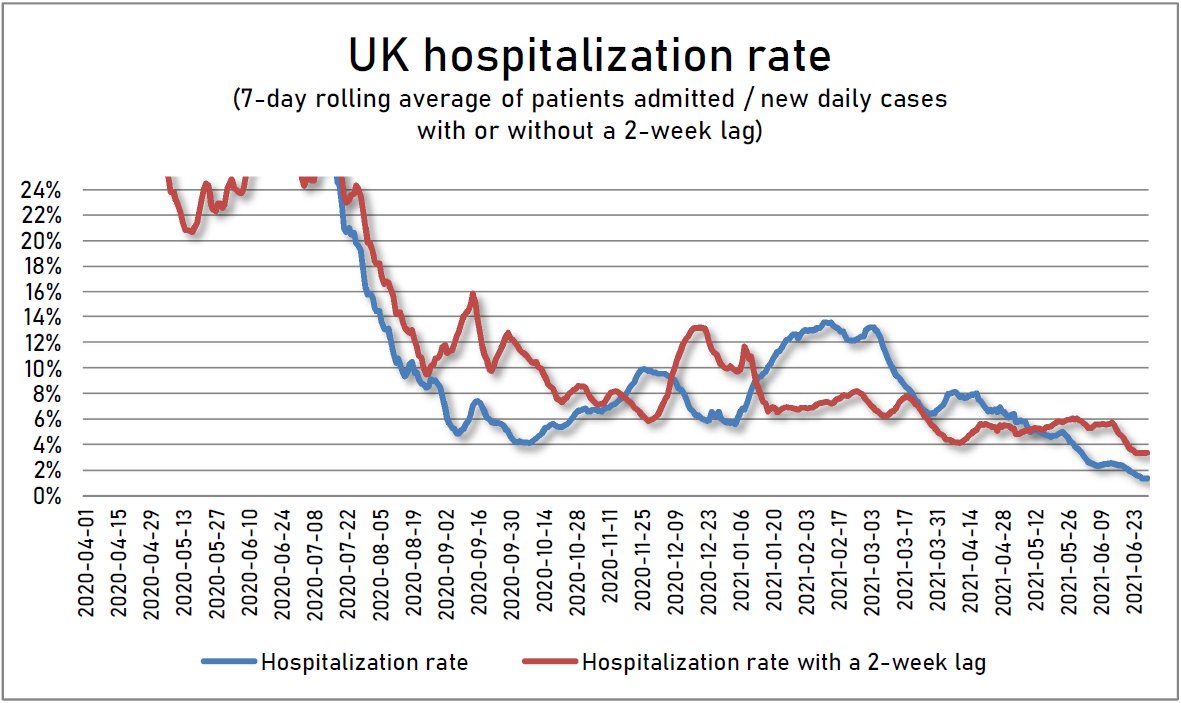
Since the UK decided to experiment with living with #COVID19 by dropping NPIs in the face of an upward wave, it's now more than ever important to look at data. I can't stand the bickering & manipulation by both sides, so I'll try to look at it objectively.
bloomberg.com/news/articles/…
bloomberg.com/news/articles/…
All numbers used here are from GOV.UK summary & this analysis ends on 29 June, the last day with hospitalization info. Charts are logarithmic, adjusted to match a 100 for both cases & hospitalizations.
coronavirus.data.gov.uk
coronavirus.data.gov.uk
1st, let's compare daily numbers with 7-day averages. Last year, cases bottomed in July & slowly increased to 1000, while at the same time, hospitalizations continued to decrease through the summer, until September. Then, they synchronized again, with a usual hospitalization lag. 

In the summer of 2020, there were no variants & no vaccines, so this discrepancy in the trajectory suggests some seasonal effect. Maybe temperature, humidity & better mucosal immunity, maybe behavior switching median age lower, probably both. 

But this year, cases never managed to drop below 1000 & bottomed in May. Hospitalizations bottomed just two weeks later (again around 100) & are continuing to increase on a log chart a bit slower than in September. Meanwhile, cases have jumped 1000-> 10000 almost quickly as then. 

2nd, I used my seasonality chart to better compare 2021 to 2020; current & September waves look eerily similar. We are at the date when trajectories of cases & hospitalizations started to diverge. So, it's not surprising to see hospitalizations rise shallower than in September. 

In fact, it's terrible that it's rising now at all, despite the high vaccination rate & the seasonal effect. That's the result of the Delta variant & the abandonment of NPIs. Now, let's look at a difference in spread between red/blue & green/purple lines. 

3rd, those lines clearly show that at the same moment in 2020, there was a much larger hospitalization rate than there's today (more cases needed for the same no. of hospitalizations). But as you can see, much of the progress occurred by autumn; since then, it has slowed. 

When looking at the hospitalization rate with a 2-week lag, there wasn't that much of an improvement since April when it was 4%. Now, it's 3.4% & increasing again (not clearly visible yet on this chart). Once cases slow, the hospitalization rate without a lag usually shoots up. 

While the hospitalization rate & CFR improved, it's premature & dangerous to claim that the link between cases & hospitalizations/deaths has been forever broken with vaccines. Promoting a much higher no. of cases might result in no. of hospitalizations equivalent to last year. 





• • •
Missing some Tweet in this thread? You can try to
force a refresh



